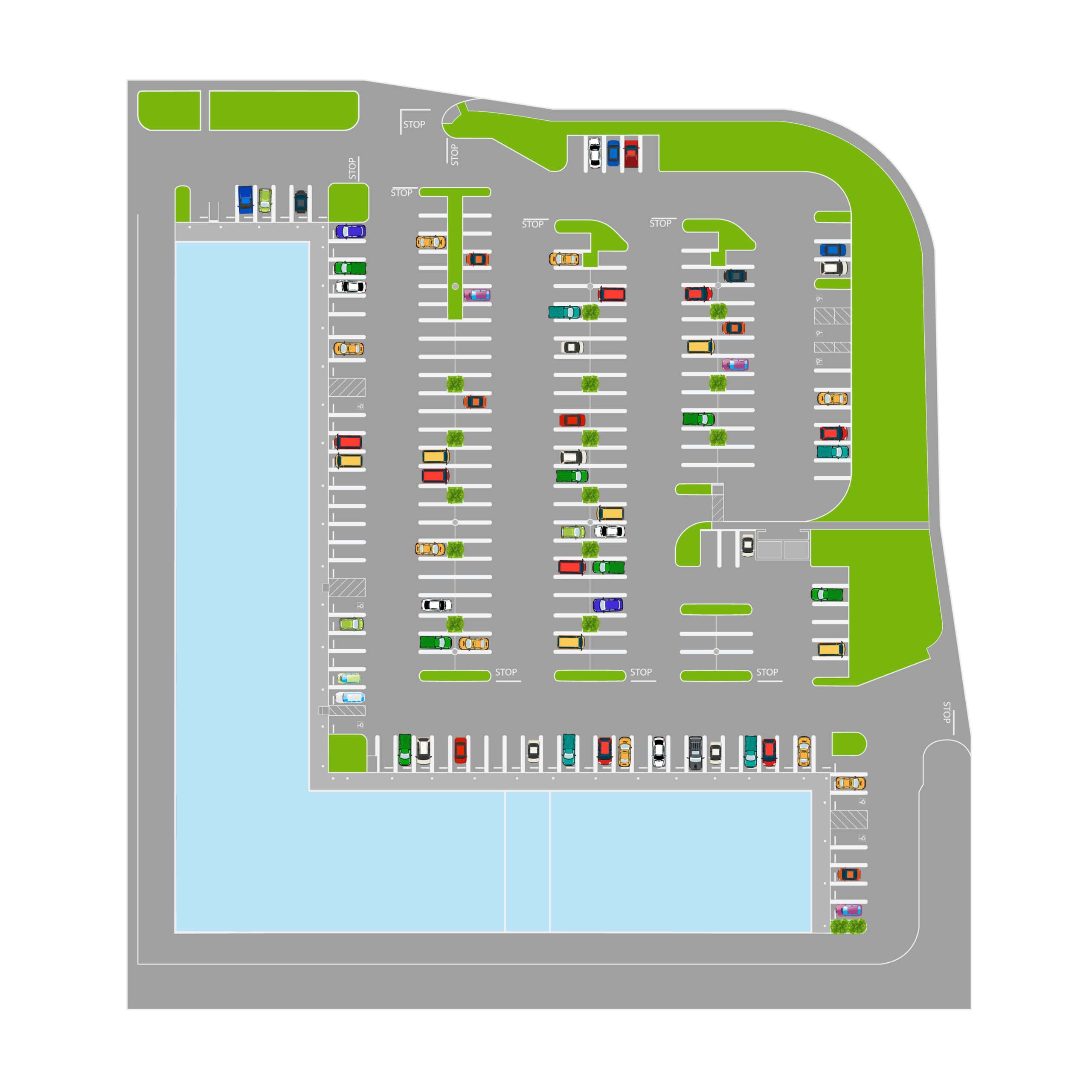Parking and Land Use in Our Urban Environment
By Linden Smith
I’m a (former) consultant in City Planning. I feel the discussion of parking requirements needs to be viewed in a larger context, as the implications of change in the logistics of commerce and land uses will dictate parking in our post-pandemic world. Also, there are a vast number of strong misconceptions around this issue that I would like to address.
City Planners, elected officials, and the general public don’t set parking minimums. The industry does. And by industry, I mean the private sector; retailers, developers, insurance companies, mortgage companies, financial institutions, even lumber companies and construction materials suppliers—any private sector business with skin in the game of development. Specifically, engineers (ITE, the Institute of Transportation Engineers) calculate parking generation rates based on actual measurements. For each land use type, so many square feet of space will generate X daily trips. This is then inserted into the ordinance and becomes broadly required for development. Development proposals can request lower standards if they have the engineering reports that substantiate the lower parking requirements for any given development. In my experience, which goes back to the early 1980s, I have never heard of such a request being turned down.
The parking meter itself dates back to the 1930s. It served as a capitalist solution to congestion, administered by the local government. Things began to change in the 1960s when mobility strongly influenced land use and development. Until then, the retail center of a city was the central business district. Then the geography of commerce changed. Retailers began the movement, seeing shopping centers and shopping malls replacing central business districts as retail hubs.
At that time, developers wanted huge parking lots (with no parking fees). They made it apparent to the consumers that accessibility and variety were far greater than in the old CBDs. The huge parking lots were cheap to develop, and they served as an advertisement for the retailers’ greater access levels (with free parking).
It worked fabulously. Our auto-centric lifestyles made the change very profitable. So much so that there were rarely any serious efforts to enforce the standards set by the development industry. The industry was happy to comply; after all, they were the ones who actually promulgate the standards. No planners or politicians were used in this. The actual effective minimums are the sum of the renters demands. When zoning ordinances are being crafted, many things are regulated that are not the product of the government, but are dictated by the private sector. Not just parking, but building codes, fire and safety standards, and building access, for example.
Today, we are seeing another shift in land use patterns brought on by the internet. E-commerce is replacing shopping malls and dropping rental rates for commercial land use. Even professional office buildings are under price pressure as there are fewer benefits to having a downtown address. Additionally, the tools have been in place for 20 years to have video conferencing, but it took a pandemic to shift the old institutions from centralized to virtual. Legal court proceedings and city council meetings are now live streamed on YouTube. Our parking authority board meetings have been over Zoom which makes them fantastically accessible to the public. The power of place is going, going, gone. Imagine a retailer so big that they duplicate the United States Postal Service as an offshoot. That happened.
Today, the real world standards for parking are being put into rental and purchase agreements by the retailers. Commerce shapes our built environment. Currently, development proposals which once would have been malls or shopping centers are now a patchwork of stand-alone buildings and lots within an area of mixed uses. The density and intensity of these developments is lower even than malls.
Zoning is a tool used to implement goals and objectives from the Comprehensive Plan. It’s like a very large and sometime rather vague set of parameters within which the community may develop. Minimum parking standards from the ITE handbook are one such element which is carried over to the zoning ordinance.
This is not unusual. Things like the structural specifications of a two by four board, screws and fasteners, wire, cement, or parking, are not made up by any public sector agency, they come from the private sector. The private sector then uses the government to implement and enforce these standards.
Planners fought against these development patterns every step of the way. You may remember one such push as being referred to as “The New Urbanism.” That was just the most recent move to design our built environment in such a way contrary to the market. You don’t hear about that anymore.
So, if you don’t like huge parking lots for being wasteful, don’t worry, they will soon be bankrupted and redeveloped into other uses. Or become commercial blight. Hopefully it’s not the latter, but only if someone can profit from it.
Linden Smith is a Parking Analyst with the Lexington & Fayette County Parking Authority. He can be reached at lsmith@lexpark.org.

